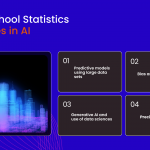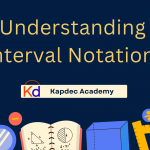Many students prepare for the SAT by drilling algebra, memorizing formulas, and solving equations—but there’s one skill that often gets ignored.
That missing skill is data interpretation.
What most students don’t realize is that data interpretation makes up nearly one-third of the math questions on the SAT. That means improving this one skill can quickly boost your score—sometimes faster than learning new formulas. [1]
The SAT scoring system is simple: you earn separate scores for Reading & Writing and Math, each ranging from 200–800, and together they form your total score of 400–1600. Within the Math section, the test is divided into domains—and one of the most important domains is Problem Solving and Data Analysis, which is directly tied to interpreting charts, tables, graphs, and real-world data. [2]
Key insight: Recent studies suggest the SAT may not predict college performance as accurately as people once believed. In fact, traditional test prep methods may overestimate readiness by about 20%. So, if students only rely on basic practice and ignore data interpretation, their actual score may fall short—sometimes a lot. [3]
However, at the same time, understanding how data-based questions work creates a huge advantage. Top scorers don’t just answer these questions—they recognize patterns, spot shortcuts, and avoid traps.
The guide below will help you learn:
- Where data interpretation questions appear in both Math and Reading sections
- How to read and analyze charts, tables, and graphs more efficiently
- The common patterns, clues, and question types that high scorers already know
- Step-by-step strategies you can apply immediately
By mastering these skills, you’ll be better prepared, more confident, and ready to unlock a higher score—especially in the areas where many students struggle.
“Numbers have an important story to tell. They rely on you to give them a clear and convincing voice.” — Stephen Few, Founder, Perceptual Edge; Data Visualization Expert
Where Exactly the Data Interpretation Questions Appear in the SAT Exam?
One of the biggest surprises for students is that data interpretation questions are not grouped in one neat section. Instead, they appear throughout the test— and often, where students could least expect them. This makes them both a challenge and a score-boosting opportunity if you know where they appear and how they’re tested.
Math Section: Problem Solving and Data Analysis
Most, but not all, data interpretation questions are found in the Math section under the domain called Problem Solving and Data Analysis. This category makes up about 29% of the Math section, and these questions only appear in the calculator module.
In this part of the test, students will work with:
- Ratios and proportions
- Percentages and growth patterns
- Probability and statistics
- Scatterplots and correlations
- Real-world numerical trends
Since this domain includes 17 out of the 58 Math questions, it has enough weight to raise noticeably—or lower—your final math score. If you improve your skill in this area, the payoff can be significant.
Reading & Writing Section: Information and Ideas
Data interpretation doesn’t just exist in Math. You’ll also see it in the Reading and Writing section, especially in the Information and Ideas question type.
These questions are designed to challenge students in the following skills:
- Compare text with charts, graphs, or tables
- Ability to pull key information from visuals
- Analyze trends and relationships
- Combine written explanations with numerical evidence
Instead of just solving equations, these questions expect you to understand information clearly and think logically. In simple terms, you need to read the chart or graph, connect it to the text, and make accurate conclusions based on what you see.
Strong data interpretation skills help you avoid simple mistakes and earn points that many students leave behind [4].
The Adaptive Test Challenge
Most importantly, because the digital SAT uses a multistage adaptive format, the test adjusts its difficulty based on your performance.
- Module 1: Everyone starts at a similar level
- Module 2: Your score in Module 1 determines whether you see easier or harder questions
This means your accuracy on data interpretation questions matters throughout the entire test—not just in one section. Consistency is key.
Across both sections, you’ll see visuals like:
- Bar and line graphs
- Scatterplots and histograms
- Dot plots and two-way tables
Therefore, knowing where and how data interpretation appears gives you a strategic advantage. Instead of feeling surprised during the test, you’ll know exactly what to expect and how to think through the information. [6]
“A wealth of information creates a poverty of attention.” — Herbert A. Simon, Nobel Laureate, Professor of Computer Science and Psychology, Carnegie Mellon University
Smart Strategies for Mastering Data Interpretation
To improve your performance on data interpretation questions, Kapdec recommends top 8 strategies that turn confusing problems into clear, manageable steps. The more consistently you apply them, the easier these questions will become.
1. Slow down before you start
Before jumping into the question, take a moment to read the title, labels, units, and scale on the chart or graph.
This simple habit prevents unnecessary mistakes and makes the information easier to understand.
2. Look for proportional relationships
If two values increase at the same rate, you’re likely dealing with a proportional relationship.
Remember: a proportional graph forms a straight line that passes through the origin.
Recognizing this early can save you time and effort [5].
3. Use estimation when it’s enough
Not every question requires exact math.
If the answer choices are widely spaced, estimate instead of calculating every detail. It’s faster—and often just as accurate.
4. Watch for misleading visuals
Stay alert when reading charts.
If the y-axis doesn’t start at zero, or if the scale jumps, the graph may exaggerate changes. Always double-check what the graph is really showing.
5. Try working backwards
If setting up an equation feels slow or complicated, plug in the answer choices and see which one fits.
Back solving can be one of the fastest and most effective strategies on the SAT.
6. Become fluent with percentages and ratios
These appear constantly in data interpretation questions.
Practice until calculating them feels natural and automatic.
7. Know the difference between percent change and percentage points
A jump from 20% to 30% is a 10-percentage-point increase, not a 10% increase.
This small difference changes the meaning—and often the correct answer.
8. Translate word problems into math quickly
Learn to spot keywords that signal mathematical actions, such as “compare”, “increase”, “estimate”, or “calculate”.
Turning word problems into simple equations will help you move faster and with more confidence. Using these strategies consistently can transform the way you approach data interpretation questions—and help you earn points many students lose.
Practical Methods to Implement the Above Strategies
Improving your data interpretation skills requires more than solving random problems—you need a structured plan. One of the most powerful tools for smarter studying is error logs. This helps you learn from mistakes rather than repeating them.
1. Create an error log to track your progress
Use your error log to record:
- The type of question (for example: inference, ratio, graph reading)
- The reason you missed it (careless mistake, misunderstanding, or skill gap)
- The correct solution or strategy
- What you will do differently next time
This turns every mistake into a learning opportunity—not a setback.
2. Take official digital practice tests
Kapdec recommends completing at least 4 to 5 full-length practice tests using Kapdec Adaptive test taking, a couple weeks prior to the exam. It will help students boost their confidence and time management [7].
3. Review deeply—not just quickly
Don’t just glance at the right answers. Ask yourself:
- Did I misread the question?
- Was I unsure which strategy to use?
- Did I rush and make a careless error?
This reflection helps you build awareness—and confidence.
4. Set weekly review checkpoints
Plan short weekly sessions to check your progress. Notice which types of data interpretation questions still feel challenging. When you find a pattern, adjust your study routine to focus on that specific skill.
Focused practice improves scores faster than general practice.
5. Use your score report as a roadmap
Once you complete a diagnostic or practice test, review the breakdown of skills.
Pay close attention to the Problem-Solving and Data Analysis category.
Let your report guide where you spend your study time.
6. Practice under realistic timing
Knowing strategies is helpful—but using them under pressure is what counts.
Practice the eight core skills you learned earlier in timed sessions so they become automatic.
Final Takeaway
Strong data interpretation skills are often what separate average SAT scores from exceptional ones. With the strategies in this guide, you now have a clear roadmap for approaching graphs, charts, tables, and data-based questions with confidence—not confusion.
Use the patterns you’ve learned to think strategically, read visuals carefully, estimate when helpful, and apply logic before solving. Pair these habits with consistent practice and track your progress using an error log, so every mistake becomes useful for feedback—not a setback.
Make time for full-length digital practice tests using Kapdec Test Prep to build familiarity with the adaptive format and realistic timing. Each test gives you valuable insight into your strengths and areas that need improvement.
Most importantly, remember that these skills aren’t just for the SAT. The ability to interpret and communicate data is valuable in college courses like economics, science, psychology, and business—and in careers where decisions rely on evidence, not guesswork.
Start with one or two strategies, build confidence, then layer in more as they become automatic. With steady practice and the right mindset, you’ll walk into test day prepared—and walk out with a score that reflects your potential.
FAQs
How important is data interpretation on the SAT?
Data interpretation plays a major role in SAT success. It represents nearly one-third of the math questions and also appears in Reading and Writing, so improving this skill can significantly boost your overall score.
What strategies can help me answer data interpretation questions more effectively?
Use strategies like examining graph labels and scales, recognizing proportional relationships, estimating when appropriate, watching for misleading visuals, and knowing the difference between percentage change and percentage points.
What is the best way to practice data interpretation skills?
Practice with purpose. Keep an error log, take full-length digital practice tests in Kapdec, and review your mistakes to understand why you missed them. Focused, repeated practice is more effective than random problem-solving.
Where do data interpretation questions appear on the SAT?
Q4. Where do data interpretation questions appear on the SAT?
You’ll find them in two places:
Math Section: Problem Solving and Data Analysis domain
Reading & Writing Section: Information and Ideas questions involving charts or tables
How does the digital SAT scoring system work?
Each section—Reading and Writing, and Math—is scored from 200–800. Together, they form your total score of 400–1600. The test uses an adaptive format, meaning your performance in the first module influences the difficulty of the second.
Do I need advanced math to do well on data interpretation questions?
Not necessarily. Most questions rely on reasoning, estimation, and interpreting visuals rather than advanced algebra. Clear thinking and pattern recognition often matter more than complicated calculations.
How can I improve if I keep making the same mistakes?
Use your error log to identify patterns—such as misreading labels, confusion with ratios, or rushing through graphs. Once you know the pattern, practice similar questions until the skill feels automatic.
Will these skills help me beyond the SAT?
Yes. Data interpretation is useful in college-level courses like science, business, economics, and psychology—and in careers where decisions rely on interpreting graphs, trends, and evidence.









